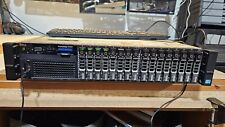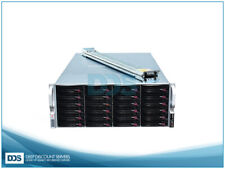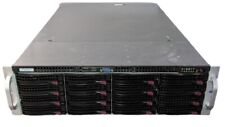-
Senior Member
registered user
wvdial script with knoppix & easy setup for Indian datacards - one trouble though
What is wrong with the script wv-connect.sh (originally compiled from various sources and posted in knoppix forum http://forums.debian.net/viewtopic.php?f=5&t=74246 ) that the modem is reinitialised after an incremental time period every time the system fails to connect to the internet?
Otherwise, the script is excellent to connect to the internet when the software provided by the service provider is only capable of operation in Windows.
The outputs are:
--> Auto Reconnect will be attempted in 5 seconds
--> Auto Reconnect will be attempted in 10 seconds
--> Auto Reconnect will be attempted in 20 seconds
............
and so on.
The script and the output files are attached.
output.txt
wv-connect.sh.txt
Regards
-
Senior Member
registered user
I am extremely sorry, the word 'originally' should be ignored. I am _not_ the creator of the script.
And the 'knoppix forum' should be read as 'Debian forum'.
I once again apologise for the words used, had there been an option I would've edited the post.
Last edited by rajibando; 02-23-2013 at 01:14 PM.
-
Senior Member
registered user
Do you use the same modem as the author of the script ('Teracom device (Model no. LW273)')?
If this is not the case are the AT commands the right ones for your device?
-
Senior Member
registered user
If you are not sure the problem is Knoppix-specific, I suggest you ask for advice in more specialized fora. As is implied in klaus2008's answer, this might be a rather model-related issue, so this may be one of the less useful places to ask for advice..
-
Senior Member
registered user
The BSNL data card outputs
yes, it works excellently. It is a 3G modem, but since my SIM card is 2G I can use the card in 2G speeds only. reports itself as HSPAdatacard.
The lsusb code in detailed mode produces the attached output.
BSNLdatacard.txt.zip
Regards
-
Senior Member
registered user

Originally Posted by
rajibando

yes, it works excellently. It is a 3G modem, but since my SIM card is 2G I can use the card in 2G speeds only. reports itself as HSPAdatacard.
The lsusb code in detailed mode produces the attached output.
BSNLdatacard.txt.zip
Regards
This might still have little to do with Knoppix?
I was in a similar situation with a 4G mobile router/3G SIM card some weeks ago. Instability, frequent rebooting. Changed to 4G SIM card, problem solved.
-
Senior Member
registered user
My issue is different - it's regarding the script
My setup doesn't hang up frequently, works just fine!
I just wanted to learn where exactly in the code is the incremental time period is incorporated?
Recall:
--> Auto Reconnect will be attempted in 5 seconds
--> Auto Reconnect will be attempted in 10 seconds
--> Auto Reconnect will be attempted in 20 seconds
...........
and so on, i.e., a sequence of ar^n, where a=5, r=2, n=0,1,2,...,n
My question was how this happens, where in the script is this formulation given? Or is it with the wvdial code itself!
-
Senior Member
registered user

Originally Posted by
rajibando

My setup doesn't hang up frequently, works just fine!
I just wanted to learn where exactly in the code is the incremental time period is incorporated?
.....
My question was how this happens, where in the script is this formulation given? Or is it with the wvdial code itself!
Oh, I didn't understand that. Sorry!
It has to be in the wvdial code, which can be inspected by installing Debian source packages, or similar downloads, like this one:
http://linux.softpedia.com/progDownl...oad-10580.html
What happens in the script, is that a conf file for wvdial is generated from user provided parameters and defaults, and wvdial is then called with that configuration.
-
Senior Member
registered user
Let us please not waste time using redundant cycles of communication

Originally Posted by
Capricorny

... a conf file for wvdial is generated from user provided parameters and defaults, and wvdial is then called with that configuration.
You had to go through the script wv-connect.sh. Please read the file carefully and then post. We have to understand that since our timezones are different, the redundant cycles of exchanges waste our time.
See particularly, the area EOT... and tmp file creation...
Last edited by rajibando; 02-24-2013 at 10:43 AM.
-
Senior Member
registered user

Originally Posted by
rajibando

You had to go through the script wv-connect.sh. Please read the file carefully and then post. We have to understand that since our timezones are different, the redundant cycles of exchanges waste our time.
See particularly, the area EOT... and tmp file creation...
I told you, it is not in that script. OK?
 Posting Permissions
Posting Permissions
- You may not post new threads
- You may not post replies
- You may not post attachments
- You may not edit your posts
-
Forum Rules


Dell PowerEdge R720 Server - 2x8c CPU,256Gb RAM, 128Gb SSD/3x900Gb SAS, Proxmox
$340.00

Supermicro 4U 36 Bay Storage Server 2.4Ghz 8-C 128GB 1x1280W Rails TrueNAS ZFS
$712.98

Dell Poweredge R640 Server | 2x Xeon Gold 6132 | 128GB | H730P | 8x HDD Trays
$1849.00

EXAGRID EX32000E Server Intel Xeon E5620 @ 2.40GHz 16GB RAM 16x 2TB HDD
$679.00

HP Proliant DL360 Gen9 28 Core SFF Server 2X E5-2680 V4 16GB RAM P440ar No HDD
$196.95

Dell PowerEdge R720XD Xeon E5-2680 V2 2.8GHz 20 Cores 256GB RAM 12x4TB
$510.00

DELL PowerEdge R730 Server 2x E5-2690v3 2.6GHz =24 Cores 32GB H730 4xRJ45
$274.00

Dell PowerEdge R730XD 28 Core Server 2X Xeon E5-2680 V4 H730 128GB RAM No HDD
$389.99

DELL PowerEdge R730 Server 2x E5-2680v4 2.4GHz =28 Cores 32GB H730 4xRJ45
$284.00

HP ProLiant DL380 Gen9 16SFF 2x E5-2680v4 2.4GHz =28 Cores 64GB P840 4xRJ45
$353.00



 Reply With Quote
Reply With Quote











